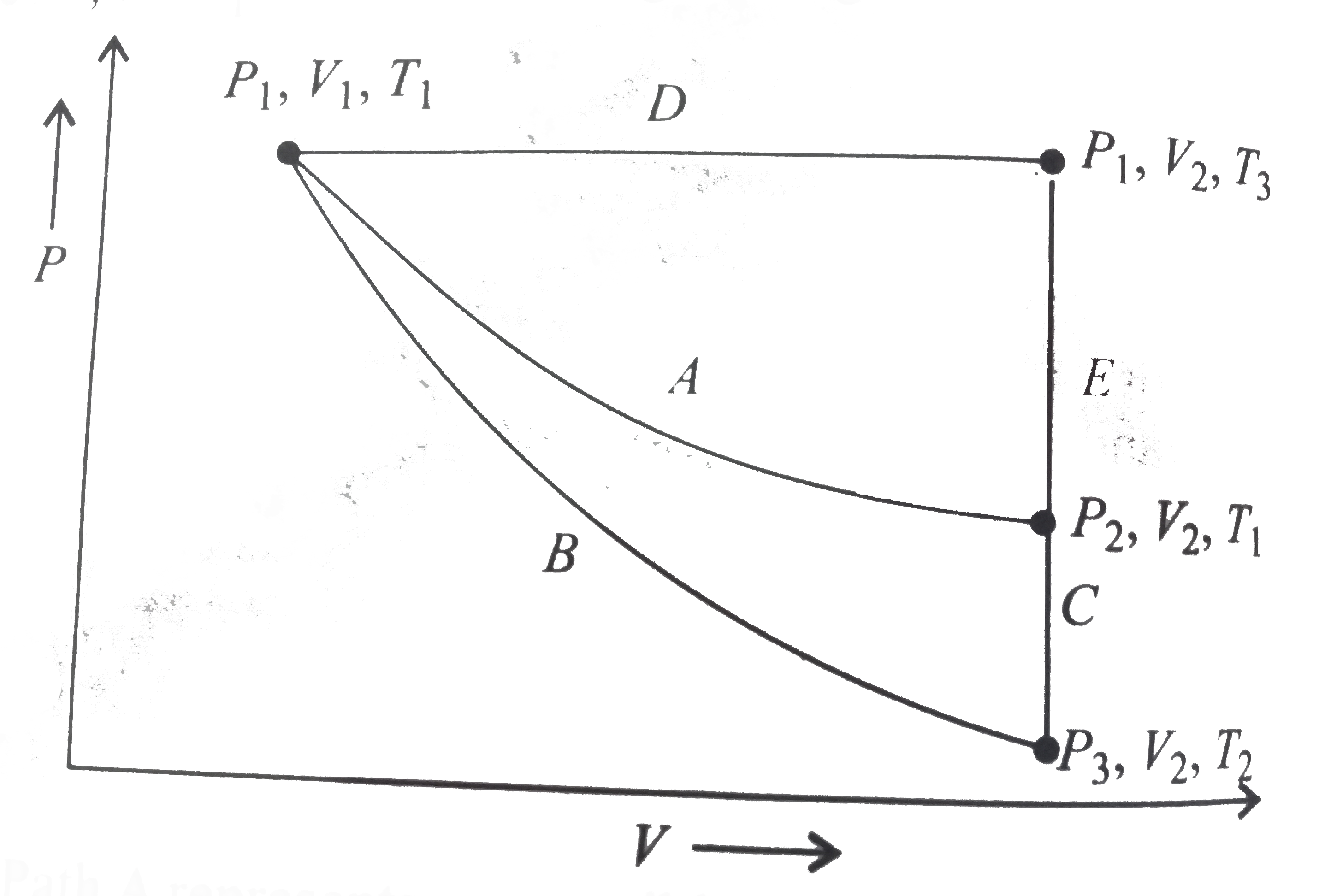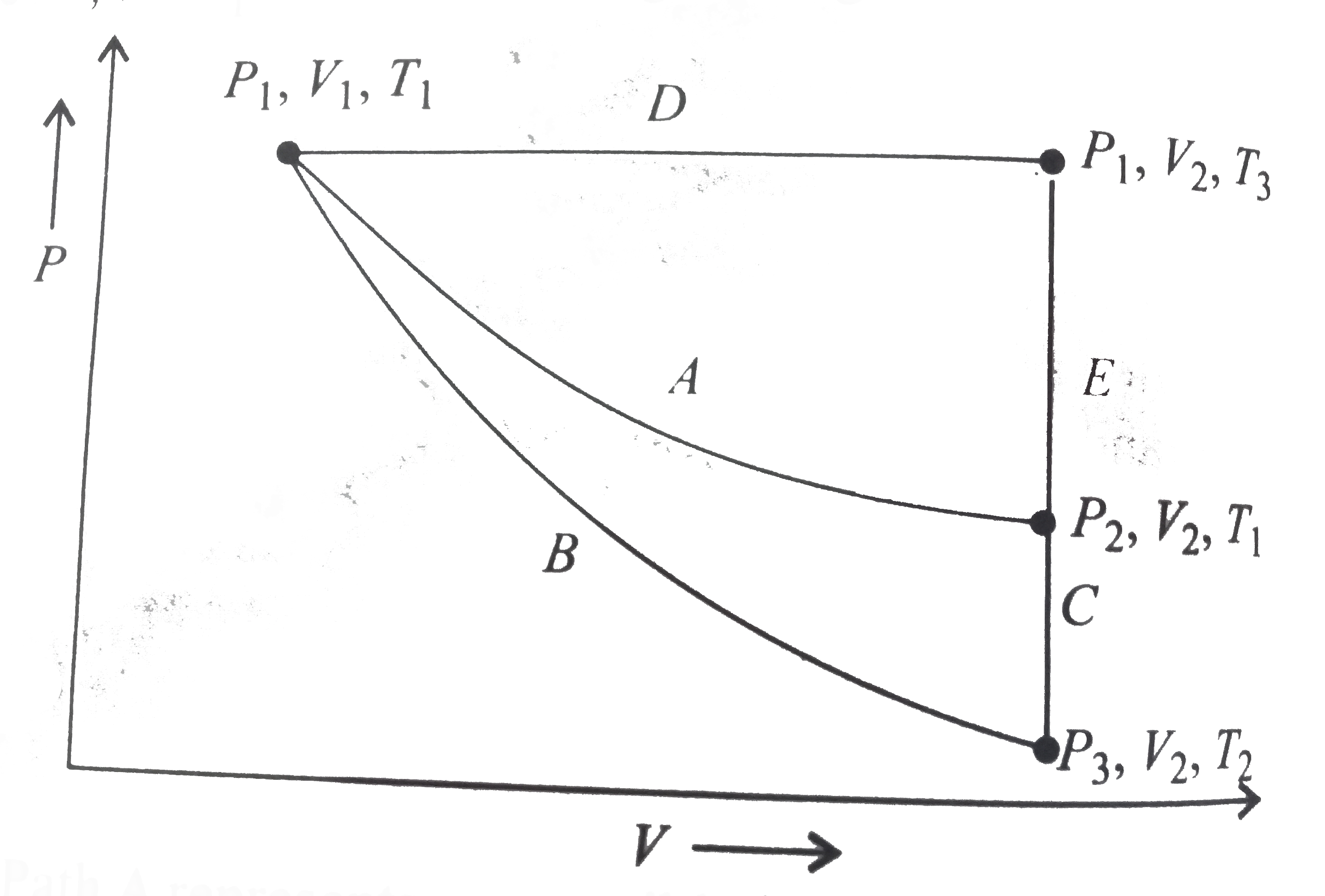At the critical condition (T=TC,P=PC,V=VC), the only incorrect information is:
The sruface differentiating liquid and gaseous phases disappears.
The density of matter in liquid and gaseous state becomes equal.
The compressibility factor of real gases becomes 83.
The intermolecular attraction betwwen gas molecules still dominates.
The correct Answer is:c
Step by step video, text & image solution for At the critical condition (T=T_(C),P=P_(C),V=V_(C)), the only incorrect information is: by Chemistry experts to help you in doubts & scoring excellent marks in Class 11 exams.
Topper's Solved these Questions
Similar Questions
Find the critical constant (PC,VCandTC) in terms of AandB, also find compressibility factor (z) for the following equation of state
PV=RR−AV+2BV2
where AandB are constants, P = pressure and V = molar volume. Hence, write the value of 1ZC.View SolutionFind the critical constant (Pc,Vc and Tc) in terms of A and B, also find compressibility factor ( z) for the following equation of state.
PV=RT−AV+2BV2
where && and B are constant, P =pressure and V=molar volume.View Solution
Knowledge Check
- Question 1 - Select One
The relationship between PC,VC and TC is
APCVC=RTBPCVC=3RTCCPCVC=35RTCDPCVC=38RTC - Question 2 - Select One
The relationship between PC,VC and TC is
APCVC=RTBPCVC=3RTCCPCVC=35RTCDPCVC=38RTC - Question 3 - Select One
The critical constants PC&TC for methane are 45 atm and 180 K. The correct statement is -
AVC=2.4LBb=0.04L/molCVC=0.8LDb=0.8L/mol
The value of RTcPcVc is -
View SolutionThe relationship between Pc,VcandTc is
View SolutionCritical constants for a real gas are given as
TC=180K,
VC=0.123Lmole
PC=45 atm,
the correct statement for the real gas is:View SolutionFor an ideal gas, an illustratio of three different paths A(B+C) and (D+E) from an initial state P1,V1,T1 to a final state P2,V2,T1 is shown in the given figure.

Path Arepresents a reversible isothermal expansion form P1,V1 to P2,V2, Path (B+C) represents a reversible adiabatic expansion (B) from P1,V1,T1→P3,V2,T2 followed by reversible heating the gas at constant volume (C)from P3,V2,T2 to P2,V2,T1. Path (D+E) represents a reversible expansion at constant pressure P1(D) from P1,V1,T1 to P1,V2,T3 followed by a reversible cooling at constant volume V2(E) from P1,V2,T3→P2,V2,T1.
What is qrev, for path (B+C)?View SolutionFor an ideal gas, an illustratio of three different paths A(B+C) and (D+E) from an initial state P1,V1,T1 to a final state P2,V2,T1 is shown in the given figure.

Path Arepresents a reversible isothermal expansion form P1,V1 to P2,V2, Path (B+C) represents a reversible adiabatic expansion (B) from P1,V1,T1→P3,V2,T2 followed by reversible heating the gas at constant volume (C)from P3,V2,T2 to P2,V2,T1. Path (D+E) represents a reversible expansion at constant pressure P1(D) from P1,V1,T1 to P1,V2,T3 followed by a reversible cooling at constant volume V2(E) from P1,V2,T3→P2,V2,T1.
What is ΔS for path A?View Solution

